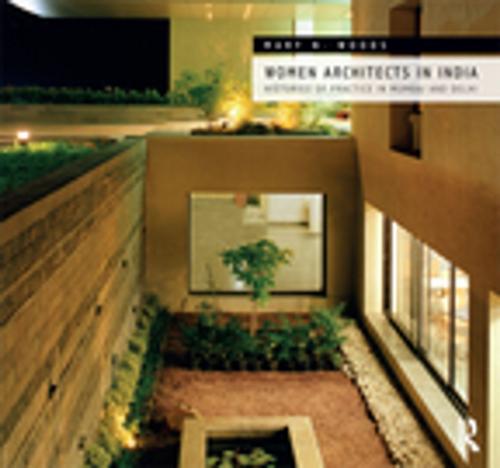Women Architects in India
Histories of Practice in Mumbai and Delhi
Nonfiction, Art & Architecture, Architecture| Author: | Mary N. Woods | ISBN: | 9781134774296 |
| Publisher: | Taylor and Francis | Publication: | October 4, 2016 |
| Imprint: | Routledge | Language: | English |
| Author: | Mary N. Woods |
| ISBN: | 9781134774296 |
| Publisher: | Taylor and Francis |
| Publication: | October 4, 2016 |
| Imprint: | Routledge |
| Language: | English |
As the first inclusive study of how women have shaped the modern Indian built environment from the independence struggle until today, this book reveals a history that is largely unknown, not only in the West, but also in India. Educated in the 1930s and 1940s, the very first women architects designed everything from factories to museums in the post-independence period. The generations that followed are now responsible for metro systems, shopping malls, corporate headquarters, and IT campuses for a global India. But they also design schools, cultural centers, religious pilgrimage hotels, and wildlife sanctuaries. Pioneers in conserving historic buildings, these women also sustain and resurrect traditional crafts and materials, empower rural and marginalized communities, and create ecologically sustainable architectures for India.
Today, although women make up a majority in India’s ever-increasing schools of architecture, it is still not easy for them, like their Western sisters, to find their place in the profession. Recounting the work and lives of Indian women as not only architects, but also builders and clients, opens a new window onto the complexities of feminism, modernism, and design practice in India and beyond. Set in the design centers of Mumbai and Delhi, this book is also one of the first histories of architectural education and practice in two very different cities that are now global centers. The diversity of practices represented here helps us to imagine other ways to create and build apart from "starchitecture." And how these women negotiate tradition and modernity at work and at home is crucial for understanding gender and modern architecture in a more global and less Eurocentric context.
In a country where female emancipation was important for narratives of the independence movement and the new nation-state, feminism was, nonetheless, eschewed as divisive and damaging to the nationalist cause. Class, caste, tradition, and family restricted—but also created—opportunities for the very first women architects in India, just as they do now for the growing number of young women professionals today.
As the first inclusive study of how women have shaped the modern Indian built environment from the independence struggle until today, this book reveals a history that is largely unknown, not only in the West, but also in India. Educated in the 1930s and 1940s, the very first women architects designed everything from factories to museums in the post-independence period. The generations that followed are now responsible for metro systems, shopping malls, corporate headquarters, and IT campuses for a global India. But they also design schools, cultural centers, religious pilgrimage hotels, and wildlife sanctuaries. Pioneers in conserving historic buildings, these women also sustain and resurrect traditional crafts and materials, empower rural and marginalized communities, and create ecologically sustainable architectures for India.
Today, although women make up a majority in India’s ever-increasing schools of architecture, it is still not easy for them, like their Western sisters, to find their place in the profession. Recounting the work and lives of Indian women as not only architects, but also builders and clients, opens a new window onto the complexities of feminism, modernism, and design practice in India and beyond. Set in the design centers of Mumbai and Delhi, this book is also one of the first histories of architectural education and practice in two very different cities that are now global centers. The diversity of practices represented here helps us to imagine other ways to create and build apart from "starchitecture." And how these women negotiate tradition and modernity at work and at home is crucial for understanding gender and modern architecture in a more global and less Eurocentric context.
In a country where female emancipation was important for narratives of the independence movement and the new nation-state, feminism was, nonetheless, eschewed as divisive and damaging to the nationalist cause. Class, caste, tradition, and family restricted—but also created—opportunities for the very first women architects in India, just as they do now for the growing number of young women professionals today.















